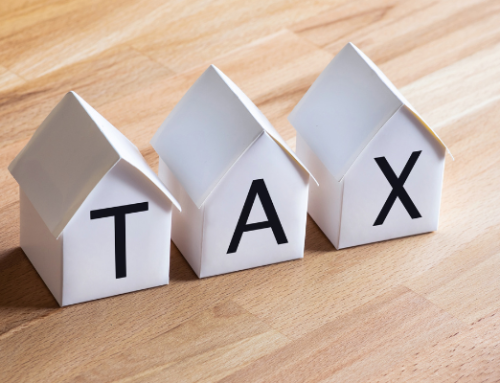Many taxpayers adopted Alternative Depreciation System (ADS) in recent years due to an election as a Real Property Trade or Business (RPTOB). This election applies to businesses in real property development, redevelopment, construction, reconstruction, acquisition, conversion, rental, management, leasing, or brokerage trade or business. The rules regarding this election changed recently under the Taxpayer Certainty and Disaster Tax Relief Act of 2020 (Relief Act) where Congress changed the law and retroactively changed the ADS life for residential real property to a 30 year ADS recovery period. Up until this point, the IRS lacked procedural rules to implement a retroactive change.
The possibility of a shorter recovery period could mean potentially large tax savings for qualified taxpayers.
What is the Alternative Depreciation System?
Under the Modified Accelerated Cost Recovery System (MACRS), there are two options for depreciating an asset over the course of its useful life: general depreciation system (GDS) and alternative depreciation system (ADS). In most cases, an asset is depreciated according to GDS and accelerates depreciation in the earlier years of an asset’s useful life; thanks to 100 percent bonus depreciation, some assets’ depreciation can be frontloaded in the first year it’s placed in service.
ADS is a straight-line method with a longer recovery period than GDS. It lowers the depreciation per year and extends the period the depreciation expense is recorded in financial statements.
Sometimes, businesses can choose ADS; in certain situations, they are required to. Up until the Tax Cuts and Jobs Act (TCJA) of 2017, the following types of property were required to use the ADS recovery period of 40 years.
- Tax-exempt or tax-exempt bond financed property
- Tangible property that is used mostly outside the U.S.
- 168(g)(7) property, including imported property
Background
TCJA amended the tax code and set recovery period under ADS to 30 years for residential rental property placed in service after December 31, 2017. However, under Rev. Proc. 2019-8, ADS life for residential real property placed in service before January 1, 2018 was subject to 40 year ADS life.
TCJA limited business interest deductions for some taxpayers but provided an election under 163(j)(7)(B) to become an electing real property trade or business but that required the use of the ADS system for depreciating certain real property. Many taxpayers adopted Alternative Depreciation System (ADS) in recent years due to an election as a Real Property Trade or Business (RPTOB). This allowed for no limit on interest expense but did decrease the depreciation available in a given year. This election, which is permanent, requires the use of ADS on certain real property currently in place but also assets purchased in the future and eliminates the ability to take bonus depreciation on those assets. While this is only a timing issue, it does result in higher taxable income in the earlier years.
Rev. Proc. 2021-28 and Residential Rental Property
The Consolidated Appropriations Act (CAA), which was passed in late December 2020, makes retroactive the 30-year recovery period for residential real estate placed in service before January 1, 2018. To be eligible, the residential real estate must be owned by an electing real property trade or business (RPTOB) and must not have been previously subject to the alternative depreciation system (ADS).
In Rev. Proc. 2021-28, which was released on June 21, 2021, the IRS explained how affected taxpayers can change their accounting method to comply with ADS.
The new ability to retroactively use a 30-year ADS for residential real property placed in service before January 1, 2018 could end up saving RPTOB taxpayers money on taxes and help to increase profits, not to mention simplify the depreciation for residential rental property. Certain restrictions apply.
For example, if the residential rental property was already considered a Sec. 168(g) property, tax-exempt, or used outside the U.S. at least 80 percent of the time, it would not qualify for the shorter recovery period. Or, if a REIT previously used ADS in some capacity, it would not qualify.
It’s possible for some taxpayers to now be using an impermissible form of accounting for residential rental property. If a taxpayer made the RPTOB election on prior returns and then proceeded to use the 40-year recovery period on residential rental real estate, they will now need to amend the returns or file a change in accounting method to stay in compliance with the new revenue ruling.
To qualify, the property must have been placed in service prior to January 1, 2018, not been previously subject to ADS, and be held by a RPTOB. The ruling does not apply to taxpayers who made or withdrew a Sec. 163(j)(7)(b) election for tax years ending after December 27, 2020 or who make a late election after this date.
Moving forward, all residential rental property will be required to use the 30-year ADS for depreciation.
Change in Accounting Under the 30-Year ADS
To change the accounting method for affected residential rental property, RPTOB taxpayers will need to file Form 3115 or an amended return or administrative adjustment request (AAR), depending on the situation. The amended return(s) will be due no later than April 15, 2022. There are special rules for BBA partnerships. For property held in a general asset account, taxpayers will also need to change the account treatment accordingly.
There may be different rules that vary by states and computing the correct depreciation for affected properties can be time-consuming and complicated. However, certain taxpayers are required to comply with the new ruling, and it can also result in immediate tax benefits.





